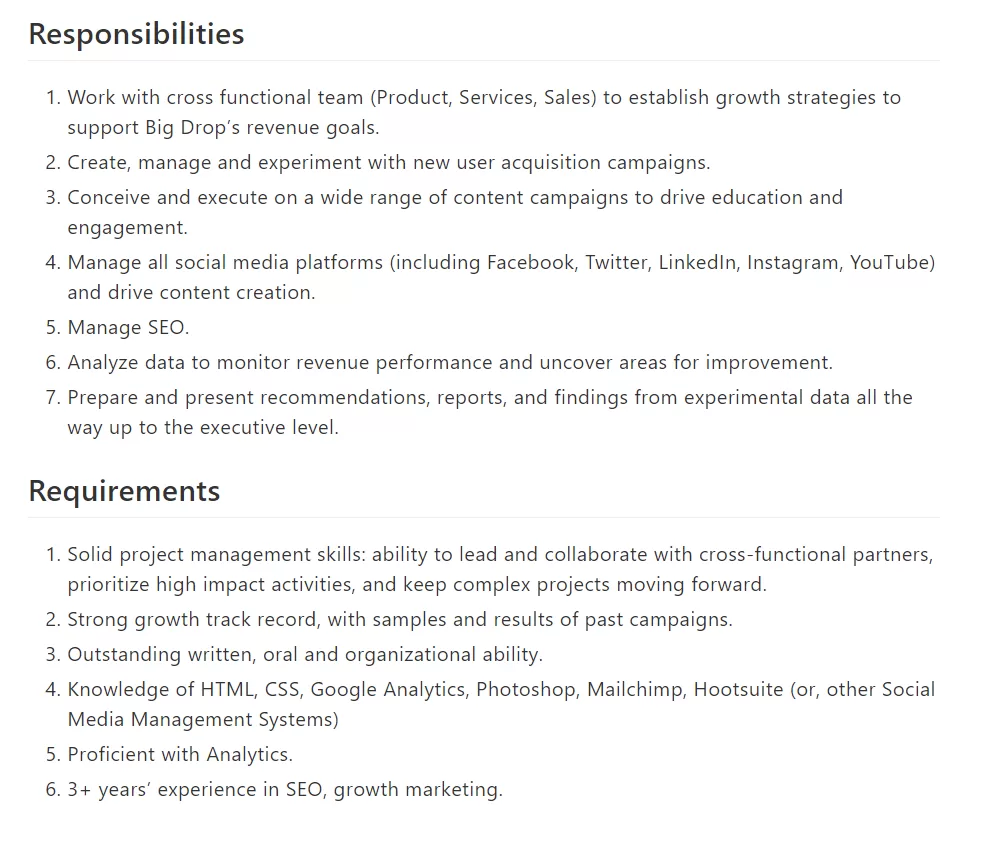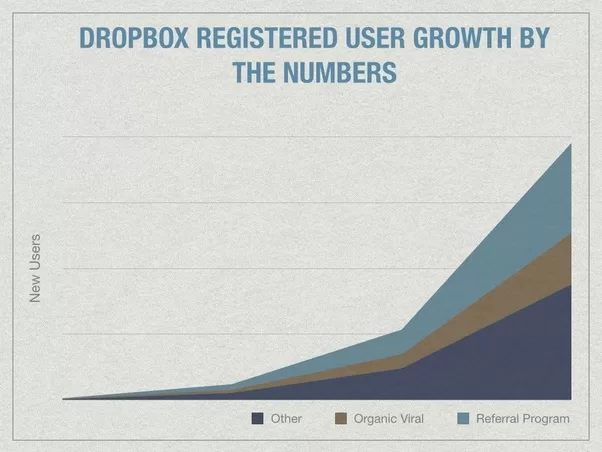The marketing industry dates back to the industrial revolution when competition in the business world began. Since then, marketing strategies, although evolving with time and technology, still remained relatively common and conventional.
The term “growth marketing” was introduced in 2010, when Sean Ellis coined the term to describe the experimental growth approach companies like AirBnB and Amazon had, ultimately shifting the way we look at marketing and its strategies forever.
At Galactic Fed, growth is our game. We are growth marketers through and through, and use our expertise and scientific approach to help companies of all sizes unlock their amazing growth potential. In this guide, we will be explaining what growth marketing is, how it differs from traditional marketing, and some strategies you can apply today.
What is Growth Marketing?
Growth marketing is the next evolution of the marketing industry. It takes the traditional marketing model, which has been around for decades, and enhances it with new and different, and sometimes uncommon, approaches that creates sustainable growth. These enhanced approaches include things like SEO and paid media (two of Galactic Fed’s specialties), split A/B testing, email marketing, data driven content, and creative ad copy. Other specialties of expertise that fall under the growth marketing umbrella are social media, viral content, video marketing, community building, copywriting, and content marketing, as can be seen in the graphic below.
Growth marketing typically focuses on the data behind the marketing, and whereas older marketing models consist of a planning and execution stage, growth marketing continually analyzes the data received and optimizes based on the information, to increase the likelihood of repeat customers.
Alex Steeno, Data Engineer, academically trained scientist, and friend of The Fed said, “I’m a scientist – but the shape this has taken makes me a modern growth marketer. These are the newest scientists born from the digital age in the world of performance marketing. We are the breed that serves as end-to-end idea factories constantly testing these new ideas and stacking on successful experiments to turn companies into rocket ships.
While I learned chemistry, experimentation and the scientific method, that’s not what I ended up doing. Fortunately, I realized that learning hard science taught me a problem solving paradigm. It taught me exactly how to frame problems, glean meaningful insights from data, and use this in iterative feedback with the scientific method loop to design better (and more successful) experiments.”
The growth marketing model lends itself to testing small hypotheses and rapid experimentation. And, as it’s the process of designing and conducting experiments to improve results of a specific area, it’s often referred to as the scientific approach to marketing.
“Growth marketing is removing the boundaries of marketing to enable every aspect of the customer experience to focus on attracting more engaged customers.” – Mike Volpe, HubSpot
Growth Marketing Vs. Traditional Marketing
As we know, traditional marketing takes a more simplistic approach, focusing on getting a product in front of the right audience, and ultimately have them open their wallets. Typically companies with large marketing budgets would focus on traditional media: tv, radio, and print advertising. Although there are other stages of the funnel to consider, traditional marketing is much more focused on transitioning a potential customer from the top of the funnel to acquisition as quickly as possible.
Growth marketing was born out of the limited budget of startup companies, with a focus on acquiring customers through unconventional or less expensive means. Growth marketing is considered more optimal because by its very nature, takes into consideration each step of the marketing funnel. Growth marketers realize that there are missing factors to consider and a higher return on investment when you can not only create a customer, but keep them around.
If you refer to the visual below, you’ll see that traditional marketing considers the customers journey to be complete after the acquisition stage. Growth marketing considers each stage of the funnel individually, with the goal of creating a customer, but a brand ambassador too. Let’s take a look at the AAARRR (aptly nicknamed the pirate metrics) method and break down each section so you can effectively use it in your own growth marketing strategy.
“For meaningful growth, startups must completely change the rules of traditional channels or innovate outside of those growth channels. They are too desperate and disadvantaged to adapt to the old rules of marketing. They have to dig deep creatively, and relentlessly test new ideas. If they don’t figure it out quickly, they will go out of business.” Sean Ellis, Founder – GrowthHackers.com
Awareness: this is the moment a prospective customer knows your brand exists. It’s what puts you on their radar and informs them that you may have a solution to their problems. This can include anything from social media marketing to seo-optimized content. Growth marketing may achieve this stage by A/B testing a blog headline, to see which drives more engagement or traffic.
Acquisition: this is typically the end goal of a traditional marketer, and may be achieved through a freemium model, email capture, or subscription. The growth marketer may experiment with the effectiveness of this by testing the different copy or call to action that asks their audience to sign up, whether in tone, design, or wording.
Activation: this relates mostly to the onboarding process. It’s what takes a paying customer and gets them interacting with or using your product or service as fast as possible. Statistically the sooner people use your product, the more likely they are to stay. Some growth marketing strategies to improve activation rate would be including a tour of your app, have personalized copy, or provide a free demo.
Retention: growth marketing focuses heavily on retention because if a typical SaaS business loses about 2 to 3% of their customers each month to churn, the business must grow by at least 27% to 43% annually to maintain the same revenue. Retention strategies in growth marketing could include a customer survey, loyalty program, or bundling your new products with existing ones.
Revenue: this stage is for when an activation turns into a paying customer, or an exiting customer pays to upgrade. Experimenting with revenue strategies for growth marketing could be in-app messaging when a users contract is close to finishing, or even testing different payment models.
Referral: the moment a customer refers your business or service, they’ve become a brand ambassador – the highest level of customer loyalty. Creating a repeat or lifelong customer who is in the referral stage is much easier, and achieving this can be done through referral bonuses or incentives.
“Finance owns the flow of cash in and out of a company. Growth marketing owns the flow of customers in and out of a product.” – Andy Johns, VP of Growth, Wealthfront
What does a Growth Marketer do?
As growth marketing becomes even more ubiquitous with marketing itself, the role of what is considered a “marketer” is shifting as well. You probably have noticed the “growth marketer” becoming a more common term in the industry and on job boards. This distinction is important because it does require a skill set different than what you may find in a traditional marketer. Let’s take a look at a typical “Growth Marketing Manager” job description:

Source: BigDrop
Some key and core competencies to takeaway from this when looking to grow your own growth marketing team are:
Analytical: this skill is crucial in a growth marketer, especially since the “art” of growth marketing can be incredibly scientific – taking and tasting hypotheses, analyzing and optimizing. This also requires the ability to glean insights from data, and also turn data into actionable tasks to execute.
Solution-focused: there’s a key difference between a problem solver and a “problem reporter.” One of the advantages of growth marketing is that you can target specific, smaller areas of your marketing strategy to try and improve them, and focusing on solutions in each of these events are what create successful growth marketers.
Creative: in marketing, very little beats genuine creativity. Since the very nature of growth marketing is thinking outside of the box with unconventional, growth-hacking type approaches, creativity is a skill that cannot be understated and should be highly valued.
Growth Marketing in action:
As we said, growth marketing didn’t arrive on the scene yesterday, although many companies are just beginning their foray into the sector. Let’s take a look at some brands who show that they know how to grow:
In their early days, mammoth file storing site, DropBox, had very little to spend on marketing. To counteract this, they developed a genius referral program. If an existing user referred dropbox to a friend and they signed up, the user would receive an extra 250mb of storage space, and DropBox would receive another user. This led to a 60%increase in user signups almost immediately. That’s what we call thinking outside the (drop) box.

Source: Mention
In the B2B space, getting a referral can be a bit more complicated. That’s why Heap used growth marketing to their advantage. If paying users shared the Heap badge on the footer of their website, they would instantly receive 50, 000 analytics sessions per month, as opposed to 5000. This gave them additional insights into who was using their product and acted as a lead generation, since now had information about who was visiting their users websites.

Source: Heap
Tapping into the now popular form of growth marketing that is video content, Dollar Shave Club proved what you can do when you combine creativity, a catchy message, and an unconventional medium. Their original YouTube ad has now garnered over 25 million views since airing. The brand was young and with a tight budget, so created their $1 a month for razor blades message, introduced the idea through a clever video – and the viral video was born. This approach has now been adopted by hundreds of brands, and YouTube is one of the most sought after advertising spaces.

Source: Dollar Shave Club
“Finance owns the flow of cash in and out of a company. Growth marketing owns the flow of customers in and out of a product.”
Although it hasn’t (and probably won’t) fully replace traditional marketing, it’s clear growth marketing is here to stay, and will very likely change the way we view the concept of marketing as a whole. The very nature of growth marketing allows for new approaches and strategies, unconventional testing, and calculated risk and as growth marketing experts, we see and learn the value of it more each day. Use this guide as your introduction to the growth marketing world, or to serve as inspiration for your next campaign; in any case – it’s time to grow.

